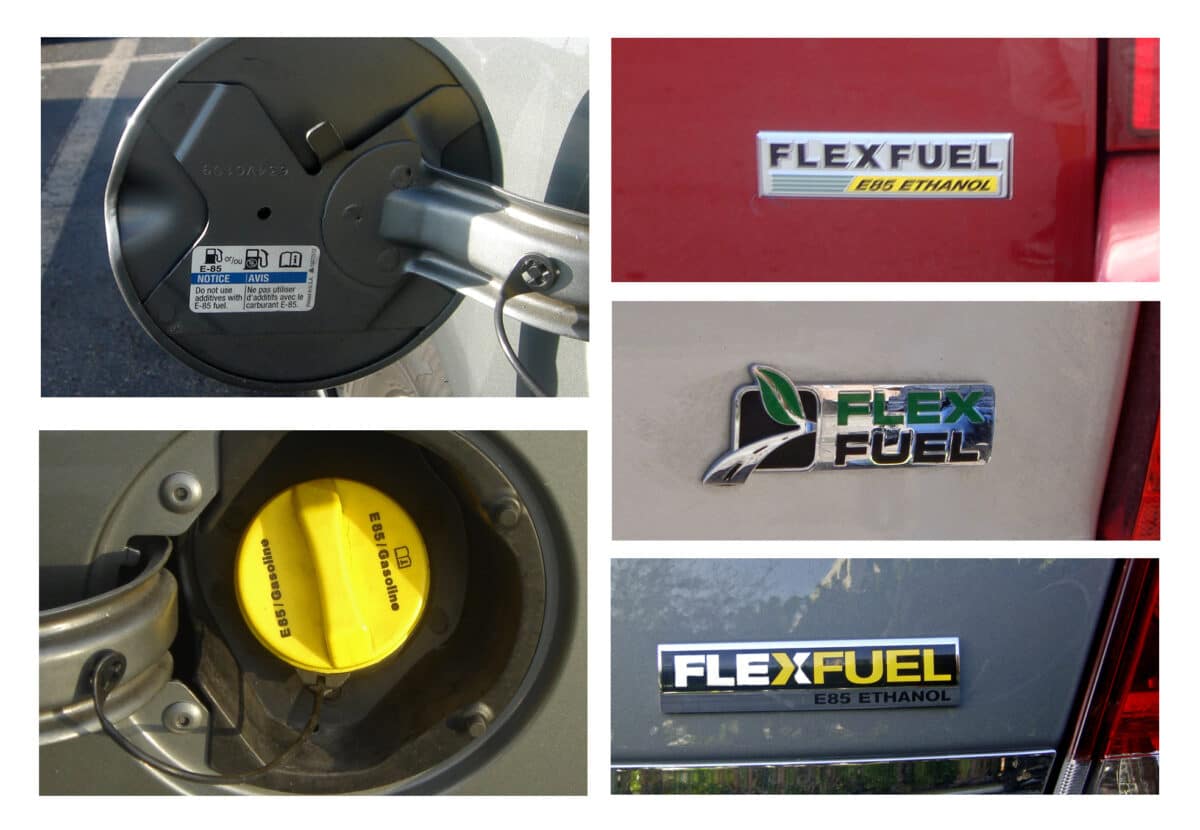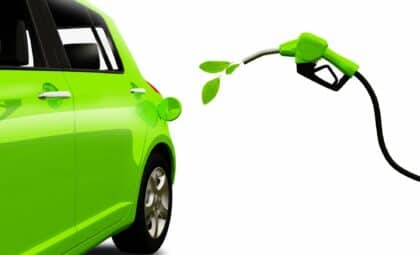
Photo: Mariordo via CC
If you’ve ever wondered whether it’s safe to use flex fuel with your vehicle, you’re in the right place. Here’s a brief overview of what flex fuel is and how to tell if your car is compatible with it.
Efficiency Boost: Ditch winter tires for all-weather ones this spring
What is flex fuel?
As Hearst Autos Research shared with Car and Driver, flex fuel can be defined as “a high-level combination of ethanol and gasoline that consists of 51 percent to 83 percent ethanol blended with gasoline.” Though, the exact ratio of ethanol to gas varies a bit depending on where you live and what season it is, according to MotorTrend’s Frank Markus.
How do you know if your car is compatible with flex fuel?
There are a few ways to find out if your vehicle is flex-fuel friendly. For starters, check the fuel door and gas cap. Per the U.S Environmental Protection Agency, some flex-fuel vehicles will have an “E85” or “E15” label on the fuel door. Others will have either a yellow gas cap or a yellow ring around the fuel nozzle insert.
You can also inspect your vehicle’s exterior for any special badging that suggests a “flex fuel” status, says the EPA. For instance, some automakers put a “Flex-Fuel” badge on the tailgate near the bumper.
Another thing you can do is check your vehicle’s owner manual. Per the EPA, it should specify what fuel you should use with your particular make and model, whether that be flex-fuel or conventional gasoline.

Photo: The News Wheel
It’s important to use flex fuel only if you’re 100 percent sure your vehicle is flex-fuel compatible. If not, you could risk causing serious damage to your car, says Delphi Auto Parts. For one thing, the high alcohol content of this fuel type can corrode the steel lines and dry out the rubber connecting hoses of a conventional engine vehicle. It can also deteriorate the fuel level sensor, which might cause it to malfunction.
In addition, you’ll want to stick with the percentage of ethanol that your car’s manufacturer recommends, according to Bell Performance. For instance, even though E15 is another common type of flex fuel, some older hybrid models can’t handle this ethanol-to-gas ratio. In this case, you’ll want to stick with E85, or whatever type of fuel the owner manual specifies.
Grow your understanding of flex fuels when you read this article. Then learn more about the unique service needs of hybrid and electric cars.
Eco-Friendly Awards: Two Chevy models rank as finalists for the 2020 Green Truck Awards
Whitney Russell resides in Dayton, though her spirit can be found beach-bumming in Puerto Rico (the land of her half-Puerto Rican heritage). When not crafting car-related content, she can be found chasing after the most amazing toddler in the world, watching her “beaver” of a husband build amazing woodworking projects, hanging out with two crazy dogs, and visiting family and friends. She also enjoys traveling, crafting, and binge-watching period dramas when time allows. See more articles by Whitney.










